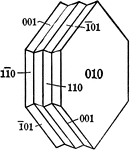Search for "twinning"
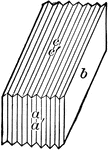
Albite
"Triclinic. Twinning very common, according to the albite law and evidenced by fine striation lines…
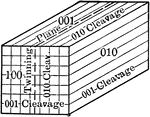
Orthoclase Crystal
"Simple orthoclase crystal showing cleavage lines and the position of the twinning plane in a Carlsbad…

Gypsum (Twinning)
This image represents a twin of the monoclinic mineral Gypsum. Its twinning plane is the orthopinacoid.

Orthoclase (Twinning)
This image represents a twin of the monoclinic mineral Orthoclase. Its twinning plane is the orthopinacoid.

Polysynthetic Twins
This crystal of Aragonite shows a method of twinning where the twinning plane may remain parallel to…
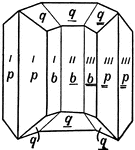
Cyclic Twinning
This crystal of Aragonite shows a method of twinning where the twinning plane may change its direction,…

Compound Twinning
This figure shows an example of Compound Twinning, where two orthoclase twins are twinned in parallel…
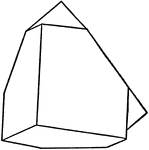
Copper Contact Twin
This figure shows a contact twin of copper, one of the three simplest isometric holohedrons according…
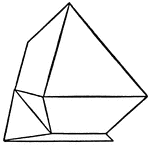
Spinel Contact Twin
This figure shows a contact twin of Spinel, one of the three simplest isometric holohedrons according…
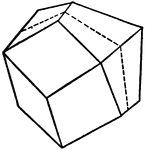
Zinc blende Contact Twin
This figure shows a contact twin of Zinc blende, one of the three simplest isometric holohedrons according…
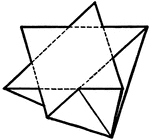
Tetrahedrite Penetration Twin
This figure shows a penetration twin of two tetrahedrons, symmetrical to the octohedral face (tetrahedrite).
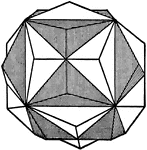
Penetration Twin of Pyrite
A penetration twin of two pentagonal dodecahedrons (known as the iron cross), whose twinning plane is…
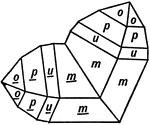
Zircon (Twinning)
In the tetragonal system, the unit pyramid of the second order is the most common twinning plane. This…
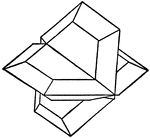
Chalcocite
The Copper Sulphide, Chalcocite, forms three kinds of twins symmetrical to ∞P, {110}, to 4/3P∞̆,…
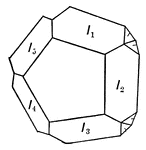
Marcasite
Orthorhombic Iron Disulphide (Marcasite) sometimes shows cyclic groups of five individuals, bounded…

Cerussite
In the orthorhombic system, tabular crystals of lead carbonite (cerussite), bounded by the forms ∞P∞̆,…
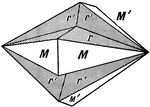
Arsenopyrite
Iron Sulpharsenide (Arsenopyrite), bounded by ∞P, {110} (M), and 1/3P∞̆, {013} (r), forms penetration…
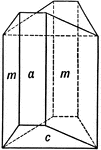
Malachite
The most common twinning plane is the orthopinacoid ∞P∞̄ , {100}, as may be seen in this example…
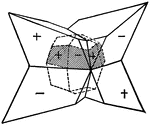
Potassium Chloride
The icositetrahedron, 4O4, {411}, on potassium chloride sometimes produces an apparent rhombohedron…
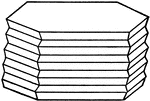
Striation of Crystal Planes
Striation of crystal planes may be produced by repeated polysynthetic twinning. This is well illustrated…
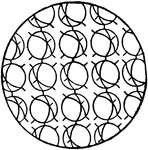
Partial Orientation of Molecules in a Solid
This illustration shows a solid state where the orientation is only partial, as in the case of twin…
